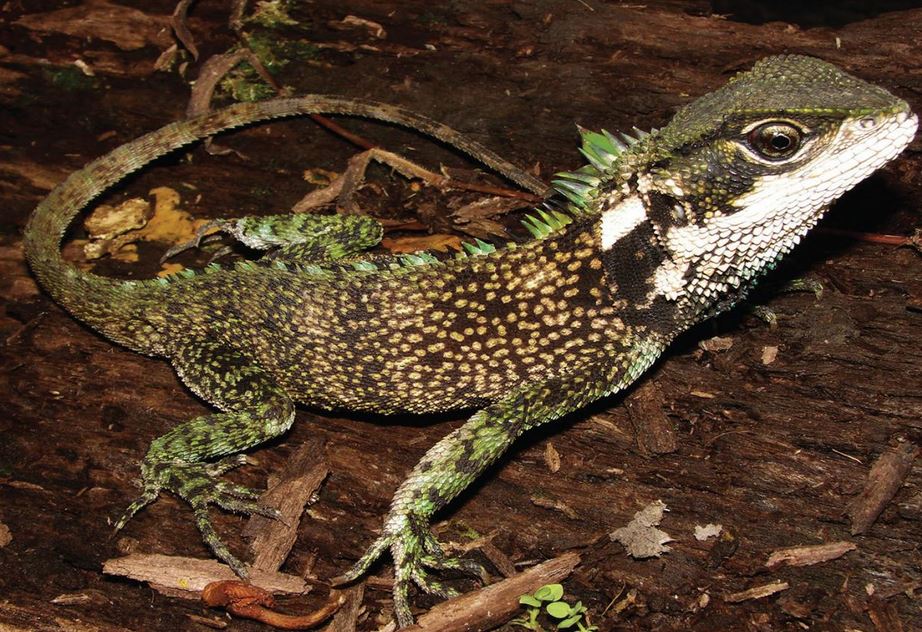Three new species of Dwarf Dragons – dragonesque woodlizards – have been discovered in the Andes of Ecuador and Peru. Dwarf Dragons, also known as woodlizards (Enyalioides), belong to a genus of lizards in the Hoplocercidae family. They are commonly found from northern South America to Panama.
The newly-discovered species differ from their closest relatives in coloration, scale features and DNA, say researchers who published their findings in the academic journal ZooKeys (citation below).
The dragon-esque woodlizards were discovered in the Andean coldforests in Peru and Ecuador by Pablo J. Venegas, from CORBIDI, Peru; Omar Torres-Carvajal, from the Museo de Zoología QCAZ, Ecuador; and Kevin de Queiroz from the Smithsonian Institution’s National Museum of Natural History, United States.

Holotype of an Enyalioides altotambo adult male. (Credit: Luis A. Coloma)
The researchers said their findings are remarkable, given that the animals are among the largest and most colorful lizards in the South American forests.
Woodlizards (Enyalioides) are diurnal creatures that live in lowland tropical forests, such as the the Chocó and western Amazon basin, as well as cloudforests on both sides of the Andes.
Fifteen types of woodlizards
The authors said that with the addition of the three new species, there are now fifteen different types of woodlizards.
After several expeditions to a number of areas along the Andean mountain range of Peru and Ecuador, a large number of woodlizards were gathered. The authors suspected there might be some undiscovered species among them.
After comparing the new specimens with those held in several natural history museums across the world, the researchers’ suspicions grew.

Male holotype of Enyalioides sophiarothschildae. (Credit: Pablo J. Venegas)
DNA analyses confirmed that three of the specimens collected belonged to three hitherto undescribed species of woodlizards.
Dr. Torres-Carvajal said:
“I started working with woodlizards in 2006 as part of my postdoc at the Smithsonian Institution under the direction of Kevin de Queiroz. At that time only seven species of woodlizards had been described, and they were recognized in the literature as one of the less diverse groups of South American lizards.”
“During the last few years we doubled the number of known species of woodlizards, showing that the diversity of these conspicuous reptiles had been underestimated.”
“That more than half of the diversity of a group of large, dragon-looking reptiles from South America has been discovered in recent years should be heard by people in charge of conservation and funding agencies.”

A live male Enyalioides anisolepis. Its body plus tail length is 35 cm. (Credit: Dr. Omar Torres-Carvajal)
The study was finance by the Gobierno Regional de San Martín (GORESAM), a Restricted Endowment Award from the Smithsonian Institution, The Systematics Association’s Systematics Research Fund, la Secretaría de Educación Superior, Ciencia, Tecnología e Innovación del Ecuador (SENESCYT), UCUMARI, and Pontificia Universidad Católica del Ecuador (PUCE).
Citation: “Three new species of woodlizards (Hoplocercinae, Enyalioides) from northwestern South America,” Torres-Carvajal, Pablo J. Venegas and Kevin de Queiroz. ZooKeys 494: 107-132. Published 6 April, 2015. DOI: 10.3897/zookeys.494.8903.

